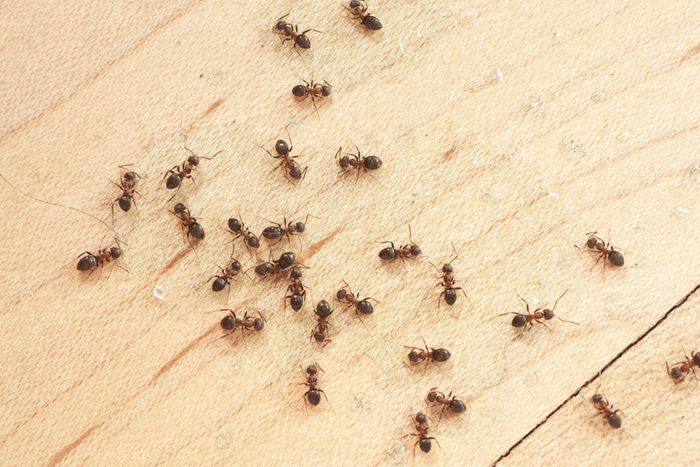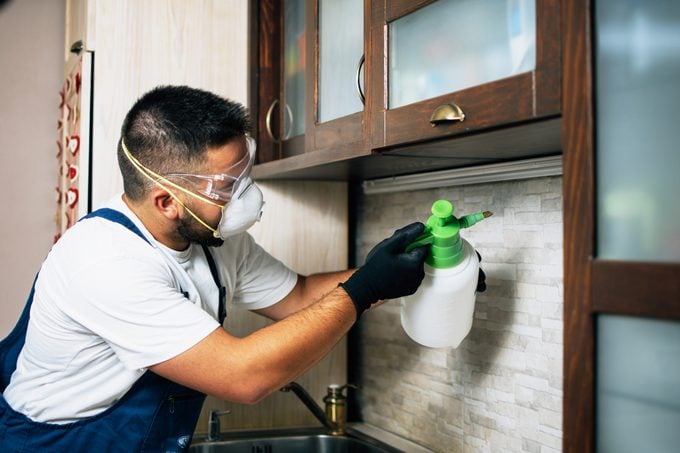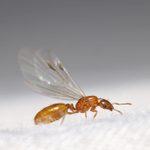9 Things Your Ant Exterminator Wants You To Know

When the ants come marching in, here's what professional exterminators want you to know.
How does that song go? The ants go marching two by two? Check again: It’s more like 20,000.
These tiny, mighty insects can do real damage if they’re carpenter ants, eating through the structure of your home. Then there are the ants that bite, and the ones that are just plain annoying.
Because of their large numbers and teensy size, they can be hard to eradicate. But all hope is not lost. Check out these tips from our exterminators for avoiding, mitigating and eradicating ants from your home.
On This Page
There Are Lots of Ant Species
Ants are generally not as alarming as other pests that can invade your home, such as rodents or roaches. But some species of ants can damage your home if not treated, says Nancy DeWitt, owner of Patriot Pest & Termite Control.
Species you should keep an eye out for include:
- Flying ants: They could be looking for a place to breed, and your house may be where they land and multiply.
- Carpenter ants: These can severely damage property damage as they excavate through wooden structures to form tunnels to build their nests.
- Black ants: They won’t damage structures but can contaminate your food. They come in armies, infesting homes to scavenge for food. “When there is one, there can be a whole colony more,” says DeWitt.
- Fire ants: When disturbed, they attack humans with a painful sting can be itchy, prone to infection and last for days.
Ants Are Prolific
A mature ant colony can contain about 10,000 to 20,000 ants, with larger colonies featuring about 50,000. They can also harbor satellite colonies while living outdoors and indoors. “Don’t wait until their whole colony enters your home and nests there permanently,” DeWitt says.
To eliminate them, a licensed professional exterminator needs to find and destroy all their nests. Methods will vary depending on species, season, mound location and more.
Repellent Sprays Can Backfire
Ants are finicky about repellent sprays, says Godfrey Nalyanya, entomologist and technical services manager at Ehrlich Pest Control. Using the wrong product can actually make the ants regroup and return. But Eric Hoffer, president of Hoffer Pest Solutions, says sometimes a spray used in concert with bait traps can help.
With traditional pesticide spraying, Hoffer says you’ll only kill the ants that physically walk through where you sprayed. Sometimes infected ants bring some of the pesticide back to the colony on their feet. But the bait traps act as a pseudo-food source for ants. They collect the bait, then bring back to the colony to eat, poisoning them all.
If this combo doesn’t work, call a pro.
Watch for Signs of Ants
Nalyanya says there are lots of signs ants have taken up residence in your home.
- Live ants: A large number can be a clear indication of a problem. Ants are often found in kitchens or other areas with food.
- Pathways: Some ants lay down a pheromone in their trail to a food source to attract other ants from their colony.
- Nests: A nest site can look like a small pile of soil or dirt. Some ant species like to make their homes in walls or other quiet, dark places, which can be difficult to spot.
- Dirt: Small piles, usually found around nest sites, can indicate an ant infestation.
Proper Sanitation is Essential
Like any good first step to pest control, DeWitt says it’s important to clean and sanitize your household regularly. Don’t leave any crumbs or traces of sweets and starchy ingredients. Seal food in airtight containers.
Tune Up Your Home
Check and seal any cracks and holes in the walls, floorboards, radiators and other possible open points of entry. DeWitt says Also check for possible moisture problems on your wood structures. Damp or rotting wood and hollow doors are favorite breeding grounds for carpenter ants.




